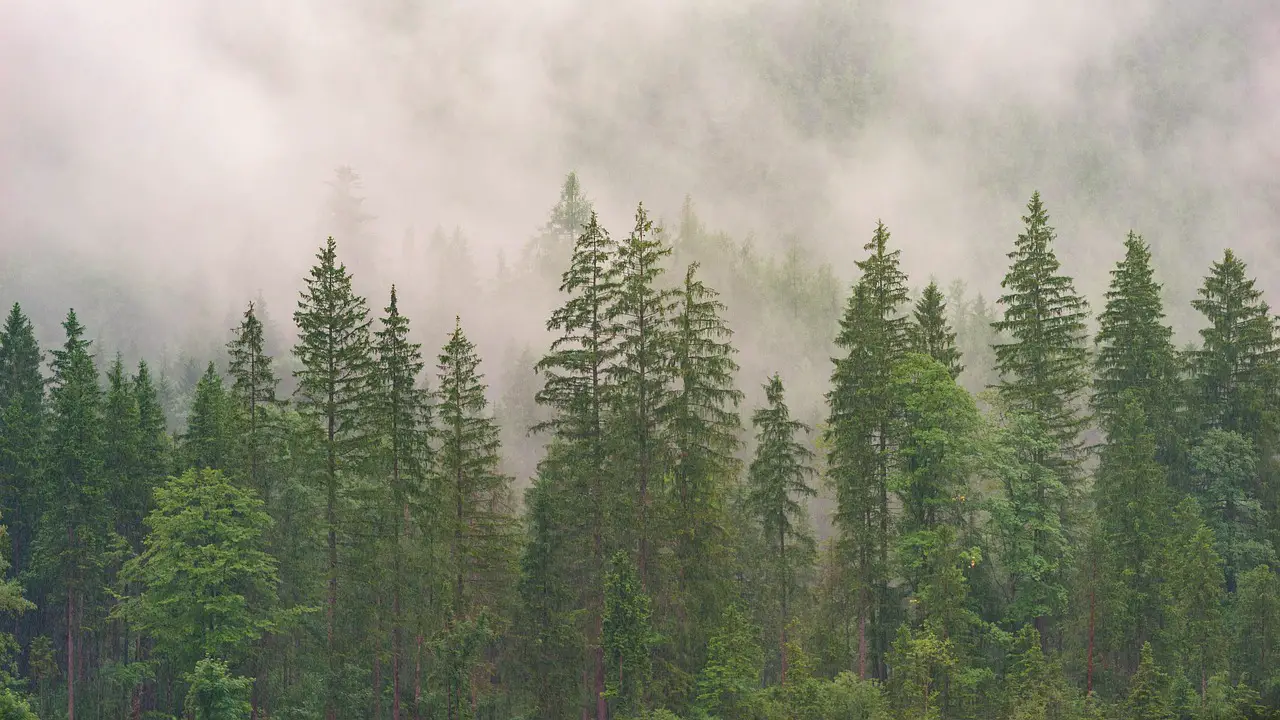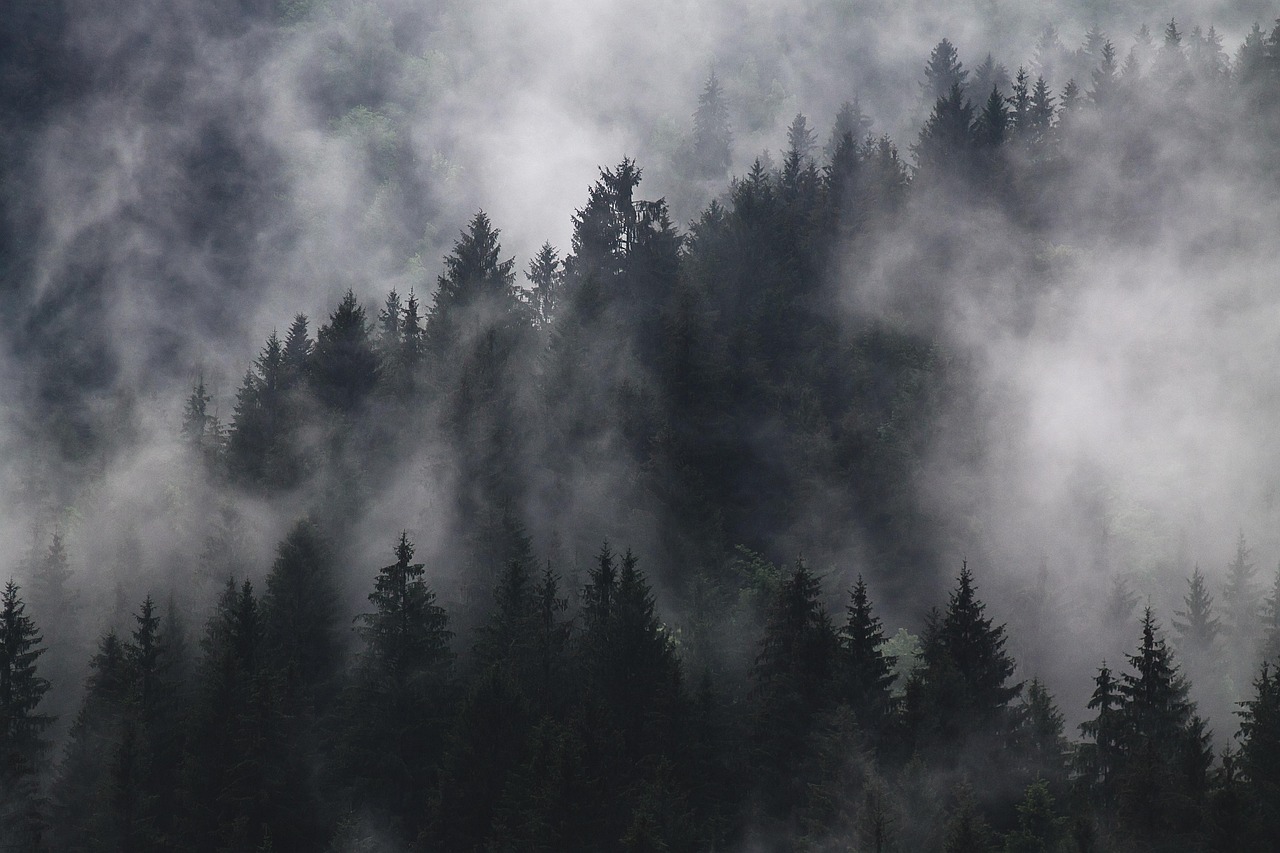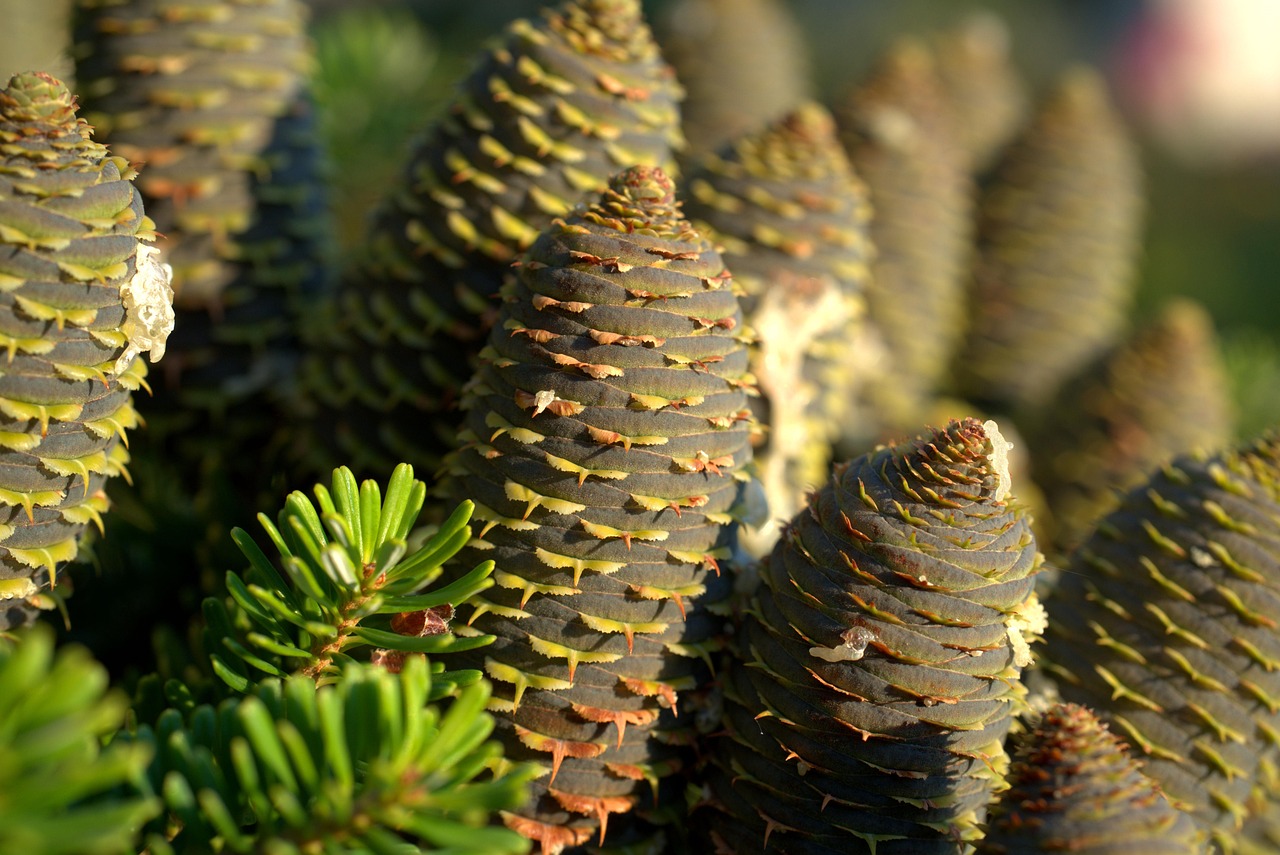Balsam fir trees do not thrive in Florida due to the state’s warm, humid climate, which is unsuitable for their growth. These trees prefer cooler temperatures and well-drained, acidic soils found in their native habitats of North America.
Balsam fir (Abies balsamea) is a species of fir tree that is predominantly found in the northeastern United States and parts of Canada. This tree is renowned for its fragrant needles, straight trunk, and conical shape. It has become a popular choice for Christmas trees due to its pleasant aroma and attractive appearance. However, the environmental conditions in Florida significantly differ from those in its natural habitat.
Understanding the growth requirements of balsam fir trees is essential to appreciate why they struggle to thrive in Florida. These trees typically flourish in cooler climates with temperatures ranging from 20°F to 75°F. Their ideal growing conditions include:
- Well-drained, acidic soils
- Consistent moisture
- Full sun to partial shade
- Cold winters
Florida’s climate poses several challenges for balsam fir trees. The state experiences high temperatures year-round, along with increased humidity levels. Such conditions can lead to stress on the trees, making them more susceptible to pests and diseases. Balsam firs are particularly vulnerable to root rot, which is exacerbated by the warm and wet soil conditions prevalent in Florida.
Climate Conditions in Florida

Florida has a subtropical climate, characterized by long, hot summers and mild winters. The average annual temperature ranges between 65°F and 82°F, with July being the hottest month. This climate is generally unsuitable for species like balsam fir that require more temperate conditions.
| Climate Feature | Florida | Ideal for Balsam Fir |
|---|---|---|
| Temperature | 65°F – 82°F | 20°F – 75°F |
| Humidity | High | Moderate |
| Soil Type | Varied, often clay-based | Well-drained, acidic |
The unique weather patterns in Florida contribute to its lush vegetation, which includes a variety of palm trees and tropical plants. While these species thrive, the native flora of cooler regions like balsam fir cannot adapt to the heat and humidity of the South.
In contrast to the conditions required by balsam fir trees, Florida’s native evergreen species are better suited to withstand the local climate. Trees such as the longleaf pine and slash pine have adapted over the years to flourish in Florida’s environment. These species are more resilient to heat and are able to tolerate periods of drought, which are common in certain areas of the state.
Challenges Faced by Balsam Fir Trees
Several challenges prevent balsam fir trees from thriving in Florida. Firstly, the high summer temperatures can lead to heat stress. Trees that cannot adapt may exhibit signs of wilting or leaf scorch. Additionally, consistent moisture from frequent rainstorms can saturate the soil, leading to root rot.
Pests such as the balsam woolly adelgid also pose a significant threat to balsam firs. They thrive in warmer climates and can infest trees that are already weakened by environmental stressors. These insects cause damage by feeding on the tree’s sap and can ultimately lead to tree death if left untreated.
In summary, while balsam fir trees are beautiful and aromatic, their growth in Florida is severely limited by the state’s unsuitable climate conditions. Understanding these factors is crucial for anyone considering planting or caring for this species outside of its natural habitat.
Soil Requirements for Balsam Fir Trees
The soil composition and quality play a significant role in the growth and health of balsam fir trees. These trees are particularly dependent on specific soil conditions to thrive. Understanding these requirements can provide insights into why they struggle in Florida’s environment.
Balsam fir trees prefer:
- Well-drained soils: Excessively wet soils can lead to root rot. Balsam firs require soil that allows excess water to flow away while retaining essential moisture.
- Acidic pH: These trees favor acidic soils with a pH level between 5.0 and 6.5. In contrast, many soils in Florida are more alkaline or neutral, which can hinder the tree’s ability to absorb nutrients.
- Organic matter: A rich layer of organic material enhances nutrient availability and moisture retention, both crucial for the growth of balsam fir trees.
In Florida, the predominant soil types often include sandy or clay variants, which may not meet the necessary drainage and acidity requirements for balsam firs. This discrepancy further complicates any attempts to cultivate balsam firs in the region.
Pest and Disease Management
Even in optimal conditions, balsam fir trees are susceptible to various pests and diseases that can threaten their health. In Florida, the likelihood of pest infestation increases due to the warm climate, making management essential for any potential cultivation.
Common pests affecting balsam firs include:
- Balsam Woolly Adelgid: This insect is particularly harmful as it feeds on the sap and can weaken or kill trees over time.
- Eastern Pine Beetle: This bark beetle targets weakened trees and can cause significant damage, especially in warmer climates.
- Spruce Budworm: Although primarily affecting spruce trees, this pest can also infest balsam firs, leading to defoliation and stress.
Prevention and management strategies for these pests include:
- Regular Monitoring: Regular checks for signs of pest activity can help catch infestations early.
- Use of Insecticides: Appropriate treatments may be necessary in severe cases, but they should be used judiciously to avoid harming beneficial insects.
- Promoting Tree Health: Healthy trees are more resilient to pests, so maintaining proper watering and soil conditions is crucial.
Climate Change Impacts
Climate change is an overarching threat that affects many species, including balsam fir trees. As global temperatures rise, shifts in precipitation patterns and increased frequency of extreme weather events can further threaten the viability of balsam firs in regions outside their natural habitat.
The potential impacts of climate change include:
- Increased Temperatures: Higher temperatures can lead to heat stress and altered growth cycles for balsam firs.
- Altered Precipitation Patterns: Changes in rainfall can result in either drought or excessive moisture, both of which can be detrimental.
- Pest Proliferation: Warmer conditions often allow pests to thrive, increasing the likelihood of infestations.
In Florida, these impacts may exacerbate the already unsuitable conditions for balsam fir trees. As environmental stresses increase, the possibility for successful cultivation diminishes even further.
Alternative Species for Florida Gardens
If you are considering planting evergreen trees in Florida, there are several alternatives better suited to the state’s climate. These species can provide similar aesthetic qualities without the challenges associated with balsam firs.
- Southern Magnolia (Magnolia grandiflora): An iconic southern tree with large glossy leaves and beautiful flowers.
- Loblolly Pine (Pinus taeda): A fast-growing tree that thrives in wet areas and is widely used in landscaping.
- Florida Yew (Taxus floridana): A smaller evergreen that adapts well to various soil types and provides excellent ground cover.
Selecting species that align with Florida’s climate will ensure a healthier garden while enhancing the aesthetic appeal of your outdoor spaces. By choosing plants suited to local conditions, you can create a thriving landscape that showcases the beauty of native flora.

Ecological Importance of Balsam Fir Trees
Balsam fir trees play a significant role in their native ecosystems. Understanding their ecological contributions provides insight into why they are valued despite their unsuitability for Florida’s environment. These trees form part of the boreal forest and contribute to biodiversity in several ways.
Key ecological benefits of balsam firs include:
- Habitat for Wildlife: Balsam fir trees provide critical habitat for various species, including birds, mammals, and insects. Their dense foliage offers shelter and nesting sites.
- Carbon Sequestration: Like other trees, balsam firs absorb carbon dioxide, helping mitigate climate change by storing carbon in their biomass.
- Soil Erosion Prevention: The root systems of balsam fir trees help stabilize soil, reducing erosion and promoting healthy soil structure.
While these benefits are significant in their native habitats, introducing balsam firs to Florida would not yield the same ecological advantages. Instead, it could disrupt local ecosystems, leading to adverse effects on native species.
Growth Conditions in Their Native Habitat
The natural habitat of balsam fir trees is predominantly found in cooler regions characterized by specific growth conditions. These conditions are crucial for their successful development and long-term health. Here are some key aspects of their native growing environment:
- Temperature Variability: Balsam firs thrive in regions with cold winters and mild summers, where temperature fluctuations contribute to their dormancy period.
- Moisture Availability: Although they require consistent moisture, the precipitation in their native areas often falls as snow during winter months, providing moisture during the growing season.
- Soil Type: The soils in boreal forests are typically acidic and rich in organic matter due to decomposing plant material, creating an ideal environment for balsam fir growth.
These environmental factors create a niche where balsam fir trees can flourish. In contrast, Florida’s subtropical conditions do not align with these requirements, making survival and growth difficult.
Cultural Significance of Balsam Fir Trees
Balsam fir trees hold cultural significance in many regions, particularly in North America. They are often associated with Christmas traditions and have been used for various purposes throughout history.
Some notable cultural aspects include:
- Christmas Trees: Balsam firs are popular choices for Christmas trees due to their symmetrical shape and pleasant fragrance, contributing to holiday traditions.
- Traditional Uses: Indigenous peoples have historically used balsam fir for medicinal purposes, as well as for crafting canoes and tools.
- Aromatic Oils: The tree’s resin is harvested for its aromatic properties and is often used in essential oils and perfumes.
The cultural connections to balsam firs further underscore their importance in landscapes where they can thrive. In Florida, however, such traditions cannot be supported due to the tree’s inability to grow in the local climate.
Environmental Threats to Balsam Fir Populations
Balsam fir trees face several environmental threats that impact their populations in their native habitats. Understanding these threats can provide context for the challenges they would encounter if introduced to different environments like Florida.
- Climate Change: As temperatures rise and weather patterns shift, balsam fir populations may decline due to unsuitable growing conditions.
- Pests and Diseases: Increased infestations from pests like the balsam woolly adelgid can decimate populations already stressed by climate factors.
- Wildfires: Changes in forest management practices and increased temperatures can lead to more frequent and intense wildfires that threaten balsam fir ecosystems.
The combination of these threats poses a significant risk to the survival of balsam fir trees in their natural range. In Florida, these challenges would be compounded by climate mismatches and heightened susceptibility to pests.
The Role of Conservation Efforts

Conservation efforts are vital for preserving balsam fir populations and their ecosystems. Organizations and communities work together to ensure that these trees continue to thrive in their natural habitats. Key conservation strategies include:
- Habitat Protection: Designating protected areas helps safeguard balsam fir forests from development and logging activities.
- Pest Management Programs: Implementing measures to control pests while promoting the health of existing balsam fir populations is crucial.
- Research Initiatives: Ongoing research into the ecology and genetics of balsam fir can help inform better management practices.
While conservation efforts are essential, they highlight the need to appreciate balsam fir trees within their ecological context. Introducing them to unsuitable environments like Florida undermines these efforts and poses risks to both the trees and local ecosystems.
Future Considerations for Balsam Fir Trees
As we look to the future, it’s essential to consider both the challenges and opportunities regarding balsam fir trees. The ongoing effects of climate change and habitat loss present significant hurdles for these trees. However, conservation efforts and public awareness have the potential to create a more favorable environment for their survival.
Research into how balsam firs may adapt to changing climates could provide valuable insights. For instance, studies focusing on genetic diversity within balsam fir populations can help identify resilient strains that may withstand warmer temperatures. Additionally, understanding the specific ecological roles these trees play can bolster conservation strategies and enhance their protection.
There is also a growing interest in reforestation and afforestation efforts that include native tree species. Planting trees that are well-suited to local environments not only supports biodiversity but also helps mitigate climate change by sequestering carbon. In regions where balsam firs cannot thrive, promoting the growth of alternative native species can create similar ecological benefits without the risks associated with introducing non-native species.
Community Involvement in Conservation
Community engagement is vital in conservation efforts for balsam firs and other tree species. Local communities can play an active role in protecting their natural environments through various initiatives:
- Education Programs: Schools and community organizations can develop educational programs focused on the importance of local ecosystems, including the role of balsam firs.
- Volunteer Tree Planting: Organizing tree planting events can foster a sense of stewardship among residents while enhancing local landscapes.
- Monitoring and Reporting: Community members can be trained to monitor tree health and report any signs of pests or disease, contributing to early detection efforts.
By fostering a sense of connection to local ecosystems, communities can help ensure that conservation efforts are sustained over time. This collective approach not only benefits balsam firs but also enhances the overall health of the environment.

Final Thoughts
Balsam fir trees, while beautiful and ecologically important, face significant challenges when it comes to thriving outside their native habitats. The warm, humid climate of Florida is particularly unsuitable for their growth, making cultivation a difficult endeavor. Understanding the specific requirements of balsam firs—including climate, soil, and pest management—highlights why they struggle in environments like Florida.
Moreover, the ecological contributions of balsam firs in their native habitats cannot be overlooked. They provide vital services such as habitat for wildlife, carbon sequestration, and soil stabilization. Efforts to conserve these trees and their ecosystems are crucial, particularly in the face of climate change and increasing environmental threats.
As we consider the future, it is essential to focus on suitable alternatives that align with Florida’s unique climate while appreciating the ecological role of balsam firs in their natural range. By promoting awareness and engaging communities in conservation efforts, we can contribute to the preservation of these trees and our shared environment. Ultimately, respecting the ecological boundaries of species like balsam fir ensures a healthier planet for future generations.
